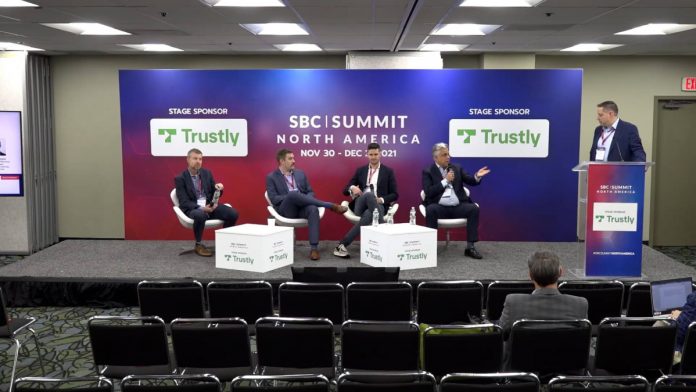A huge breadth of payment options are now available to operators on both sides of the Atlantic, and as the US market continues to grow, choosing the right ones has become a key priority.
Discussing US consumer payment choices at the ‘Staying ahead of the game – players real payment preferences’ panel at the SBC Summit North America, four industry experts shared their views on demographic changes and customer perceptions of the payment space.
Commenting on demographic differences based on age, Kamran Hedjri, Group CEO of PXP Financial and Trent Striplin, Payment Operations Director at FanDuel, both observed that younger and older customers have very distinct payment preferences.
However, Hedjri added that country and state based considerations must also be taken into account, saying: “It is very much country related and very local. What happens is that the consumers use the payment options that they use in their day-to-day life, and the younger demographic like to use Venmo, and Apple Pay and Google Pay – these are for the younger generations.
“It’s different from market to market, and state-by-state. We have entered 15 states now and are offering our payment options, and are seeing a different perception of payment options there.”
Finding common ground, Striplin observed that peer-to-peer apps, such as Vemmo, CashApp and Zell appeal to a younger demographic, many of whom are using these as a primary banking vertical as opposed to traditional institutions such as Wells Fargo or Bank of America, in a US context.
“Typically older players tend to lean towards ACH, but credit cards across the board are widespread across all demographics,” he said.
“We tend to see older demographics skew towards ACH, especially when you’re entering checking numbers and outing numbers, that’s something they’ve used before and are familiar with.
“The younger generation has grown up with PayPal, so they have that setup and have their cash bank accounts, they don’t have to enter their information and it’s safe and secure.”
For Canadian panel member Greg Kirstein, Paysafe’s Vice President of Business Development, North America iGaming, public confidence across North America in gaming operator’s payment capabilities has improved.
He remarked: “As a consumer, when you start to see other payment methods and they work the same way they do in other parts of e-commerce each and everyday, it just brings up confidence.
“I think that’s what we’re starting to see now and it’s going to play well for operators and new providers that are looking to dip their toes into gaming that historically haven’t been there.”
Offering further insight on the Canadian space, Christopher Granger, Lottery & Gaming Lead, Visa Inc, stated that the sector is learning – and it is important that it should continue learning – from the European, Australian and Rest of World markets, which have been ‘so much more advanced’ than North America.
“To compare what’s going on in Canada right now, it’s a pretty close comparison to what we had in the US four years ago,” Granger observed. “We’re trying to take those learnings as far as the issuers are interpreting it, whether they are understanding it.
“We’re working with partners and trying to do fact gathering, have conversations with issuers and tech partners and the like, so that in day one or month one we can have a better experience than what we had in the states when single gain wagering was legalised.”
Outlining his own view on public confidence, Hedriji maintained that although consumers are beginning to trust operators more and more with their transactions, customer education should still remain a focus.
“The approval rates are getting better and better and are changing our approach, but what is important for the operators is that they can pass consumers through as much as possible and this offset this negative experience of card rejection.”
“We see that confidence is increasing more and more, and the level of education and understanding on how the operators are dealing with this with the help of payment providers is improving.”
Striplin concurred with his fellow panellists, observing that approval rates have skyrocketed over the past two years from around 30-40% to the current standing of 80-90%, although noting that payments processes is one of the more difficult areas of customer acquisition for gaming operators.
“The consumer’s preference is to use their cards, it’s a device they use everyday, whether it’s an online purchase or a retail purchase,” the Director stated. “Everyone has a card in their wallet or attached to a digital wallet.”
“It’s the consumer preference, and it can be a very frustrating and confusing process when to use that card everywhere else and it doesn’t work on an operator site. It can be one of the toughest parts of the conversion funnel.”
He concluded: “The landscape is changing, customers are having a better experience and it creates an all-round more enjoyable flow.”
To view more panels from SBC NA, click here





